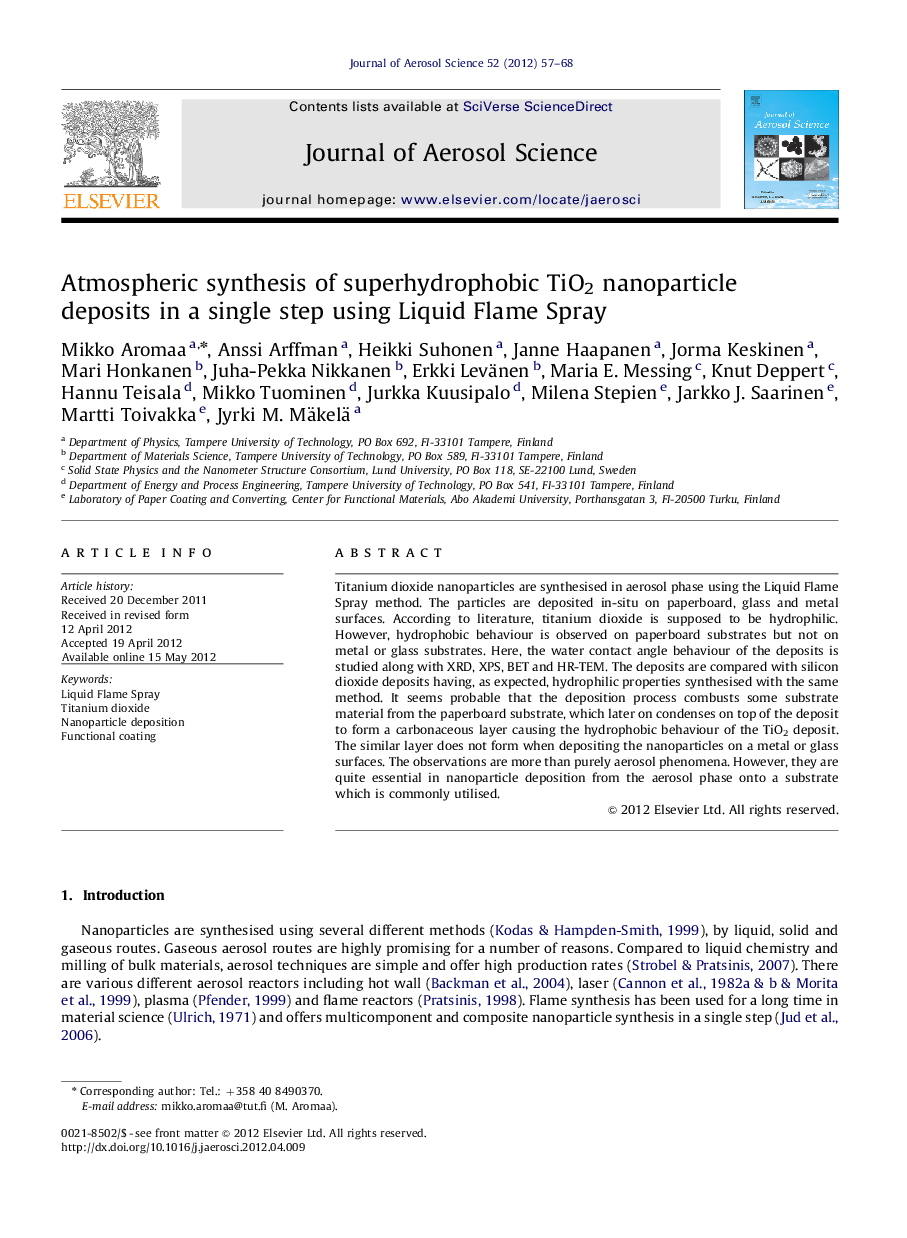| Article ID | Journal | Published Year | Pages | File Type |
|---|---|---|---|---|
| 4452549 | Journal of Aerosol Science | 2012 | 12 Pages |
Titanium dioxide nanoparticles are synthesised in aerosol phase using the Liquid Flame Spray method. The particles are deposited in-situ on paperboard, glass and metal surfaces. According to literature, titanium dioxide is supposed to be hydrophilic. However, hydrophobic behaviour is observed on paperboard substrates but not on metal or glass substrates. Here, the water contact angle behaviour of the deposits is studied along with XRD, XPS, BET and HR-TEM. The deposits are compared with silicon dioxide deposits having, as expected, hydrophilic properties synthesised with the same method. It seems probable that the deposition process combusts some substrate material from the paperboard substrate, which later on condenses on top of the deposit to form a carbonaceous layer causing the hydrophobic behaviour of the TiO2 deposit. The similar layer does not form when depositing the nanoparticles on a metal or glass surfaces. The observations are more than purely aerosol phenomena. However, they are quite essential in nanoparticle deposition from the aerosol phase onto a substrate which is commonly utilised.
► Atmospheric synthesis and deposition of functional nanoparticles. ► Superhydrophobic coating on paperboard. ► Shell formation on the particles from the substrate fumes.
